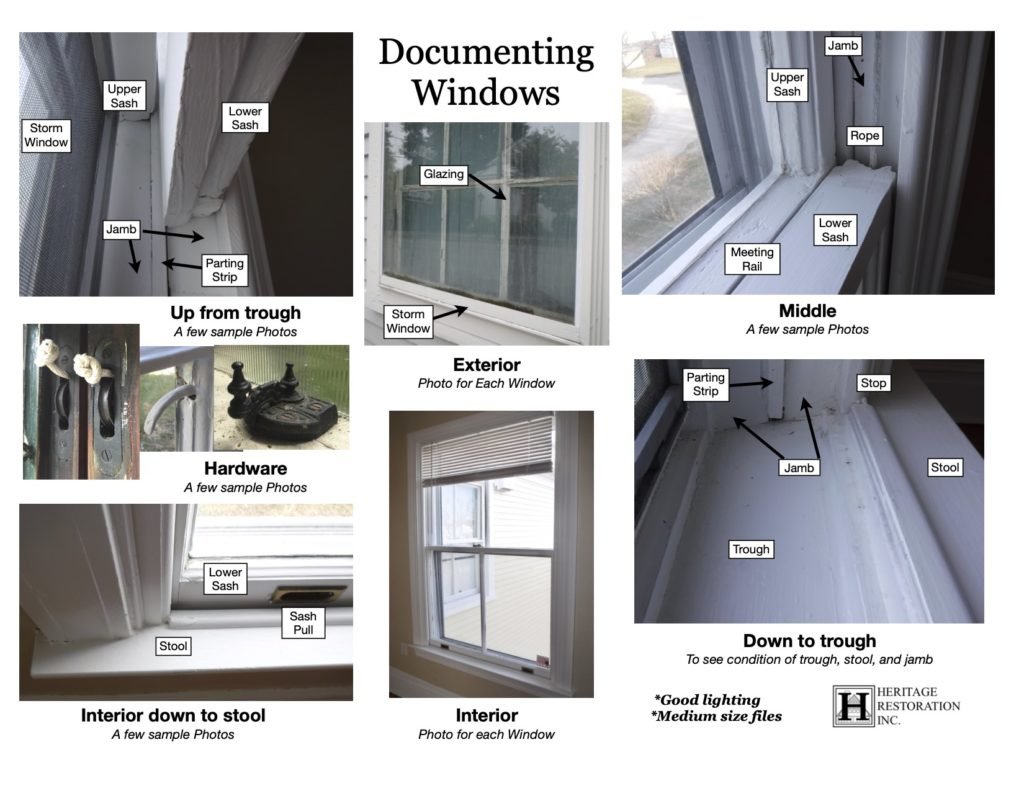Contracting in a Pandemic
Getting it done without droplets
Customer photo of railing concerns
In the blink of an eye the world changed and many found themselves at home. We became more familiar with our surroundings, seeing things we did not have the time to notice or maybe we started to notice it too much. Yet the pandemic has made our homes sacred grounds, isolation from a world on fire and where our personal spaces now include the air we breathe.
At Heritage Restoration, we get it. We have the same concerns. We want everyone to stay healthy, yet we also need to serve those who seek us out. Since March we have implemented, modified, and improved our procedures to protect each other from spreading this awful virus, while continuing to serve buildings and the people that use them.
We seek to help people with their exiting historic buildings regardless of a house's condition or budget. It's not to say we are the contractor for you or your house; often times we are not but we want to help people achieve their goal, while understanding what they have and what they can do with it. We do think good work transcends all buildings and incomes, but there are always limits. We are happy to talk about what is bugging you or your building, where of course initial consultations are free.
Essential Service
Construction may be an essential service but is it safe? Like all pandemic interactions, it depends on the people like their actions in and out of the workplace, and the space or area being occupied. Anything outside or a remodel with a lot of fresh air can reduce risk, but as soon as the space is constricted or air is shared then the risk of exposure is high.
In historic preservation, the manipulation of spaces have people living in or around them. We always respect and isolate working areas from living areas to keep dust out, but we must be additionally mindful about separation from our first interaction to our last. So what is the best way to safely plan and get work done?
Big Ideas
Documenting a Window Guide
Our role is to help customers develop ideas or define the needs of the building based on what they want to accomplish. I have spent the better part of 30 years learning how to better engage people with their buildings. It takes listening to people and seeing the building's layers, where we then make it into a set of goals or the Scope of Work. But in the past, people call and we review what they would like to do, and we meet face to face to refine the scope and see what is going on with the building for a good hour, hour and a half, then go to the office and write a proposal. But the pandemic has changed life so we must change with it.
First Contact
First contact happens the way it always did via email or phone, but today we are getting more information before the face to face meeting (if it is necessary at all).
Typically, the face to face is meant for each of us to size each other up, and us to get to know the building. But we need to limit prolonged face to face interactions so more in depth conversations via phone, emails, texts and video are a very effective. As an example, for our window services we even made a diagram about how to photograph windows, which creates a no contact way to understand condition and need. The photos can provide a sense of need, but sometimes we need a bit more.
You’re On Mute
The pandemic has made us think how else we can get intimate with a building without showing up. And no better way to get a glimpse of the house than live video.
Video conferencing is a great way to see a space and get a sense of how people feel about it. We can also direct your camera a bit, seeing things that peak our curiosity or are pivotal in defining the scope and budget. We can even see plans or other ideas using a shared screen.
Sacred Space
Site visits eventually happen for most inquiries, but since we have already shared information we can lessen face time and focus on the building's needs. This site visit is different than performing actual work, since our onsite COVID 19 procedures focus on isolation of the occupants and the workers. This site visit may be in your active living space, so what is the best way to interact?
The RI Department Of Health have clear guidelines towards Protecting Your Household and meeting onsite must follow these guidelines to keep everyone safe. Before we pass the threshold, everyone is wearing a mask. When we walk around, we stay 6 feet apart. We take pictures, listen, and write notes. And we may even have that awkward moment when our 6 foot paths must cross, but we have to be mindful of our actions. We try to touch little, but occasionally have to open that door or open a window. Science says the virus dies once it dries, and if we stay 6 feet(ish) apart with masks on, we keep the meeting as short as possible, and move outside when we can, we can stop the spread.
The Invasion
Planning work is essential, now more than ever. Once a Proposal is accepted, HRI designates a Site Manager that refines your expectations of the work. This includes not only the work to be done but how the work will happen. Our COVID19 Workplan outlines our expectations to protect you and our staff.
Our work area is already isolated for dust, debris, and other work activities but our intent is to completely separate us from you the entire time we are interacting with your building.
Final Analysis
Our craft expertise is built from knowledge and experience, and learning how to work in this pandemic is no different. We have been working through the pandemic, adapting to each scenario and new data as we should, with restless interest, some skepticism, but in the end believing in those who specialize in such things. We love buildings and we love people. And we will continue to make every effort to earn their mutual respect.




